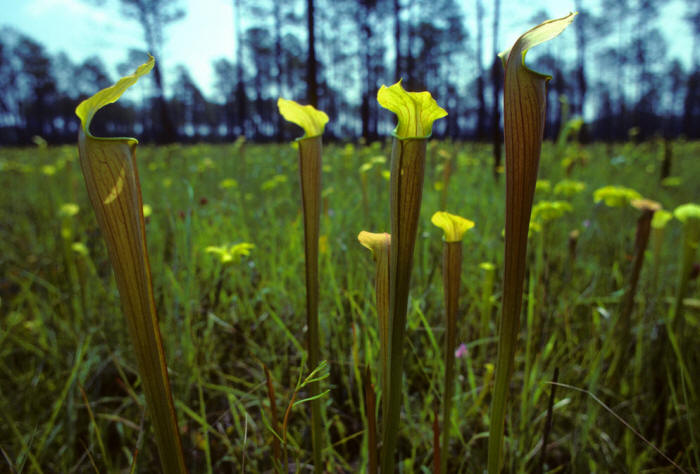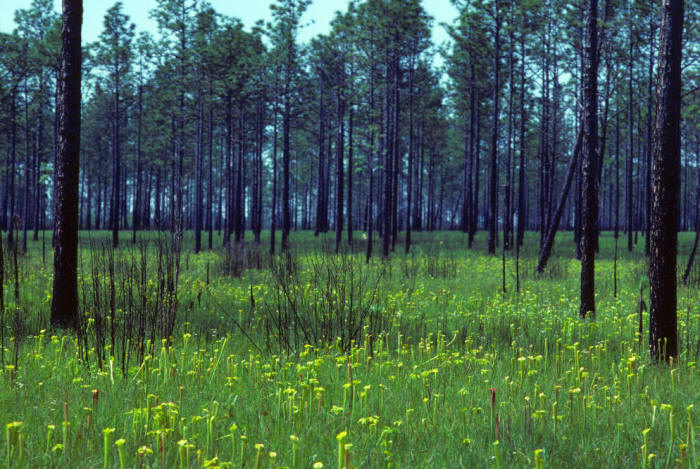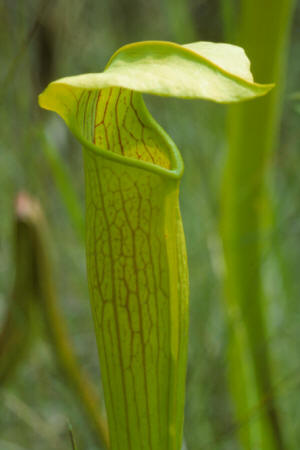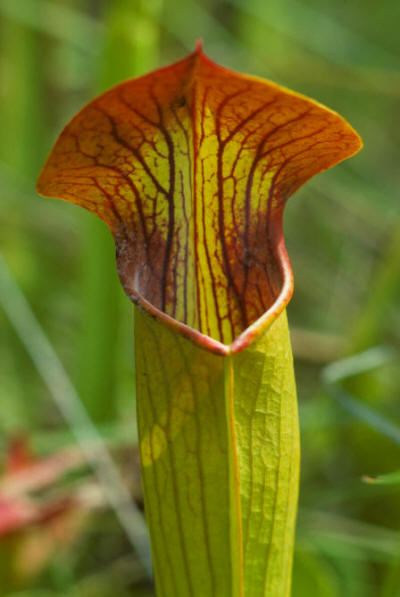|
Carnivorous Plants Story
|
||
|
|
Sarracenia alata Commonly known as the pale pitcher plant because of its pale-yellow color of the flower pedals, the pitchers of this species grow to a moderate height of 70 cm or so in native xxxx Green pitchers are veined in red. Short hood column. Minimum reflection of column margins. Flowering occurs in early April to May. In this species, only after the flower petals are gone do new pitcher of the spring start to appear.
When the trigger hairs on the inner surface of the trap lobes are stimulated, the clam-shell-shaped trap closes suddenly --- often in less than a half second --- fast enough to capture such agile insects as a fly quite comfortably. Intermeshing marginal spines effectively prevent the prey's escape. After the initial rapid closure, the insect's struggle inside the trap further stimulates the trigger hairs, causing the trap lobes to close even more tightly. In a day or so, the trap is seen tightly sealed around the free margins of the lobes, with the marginal spines pointing outwardly. The digestive fluids start to ooze into the now sealed trap cavity. As the digestive process progresses, the products of digestion are swiftly absorbed through the leaf and are carried away to the other parts of the plant.
Introduction Venus Flytrap Sundews Pitcher Plants Cobra Plant Butterworts Bladderworts
|
|



